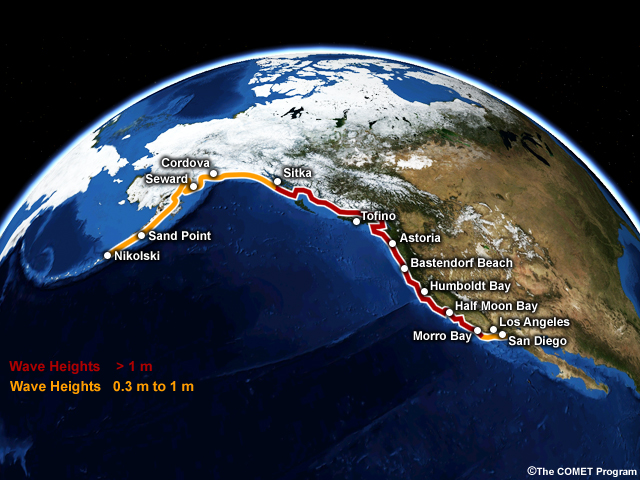Tsunami Alerts
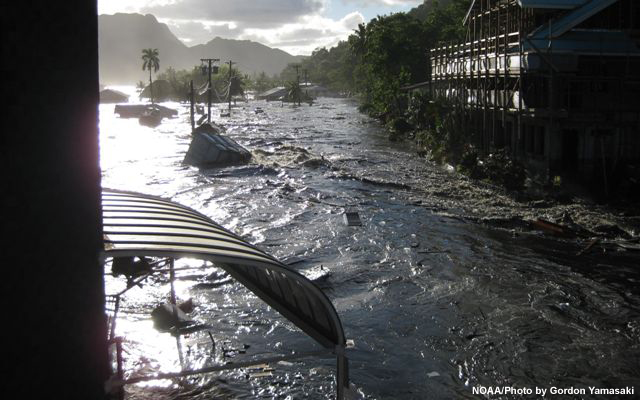
Based on the anticipated size of the tsunami, the Watchstanders at the Tsunami Warning Centers issue messages alerting people to the threat. Four main types of messages are issued by the Centers.
Question
Do you know what the four different tsunami warning messages mean? Even if you have not heard of them, based only on the words used, try to rank the following product names in order from highest to lowest threat level. Use your mouse to drag the boxes up or down into the desired order.
The correct order from highest to lowest threat level is:
- Tsunami Warning
- Tsunami Advisory
- Tsunami Watch
- Information Statement

A Tsunami Warning is the highest level of alert because a Warning means that damaging waves larger than 1 meter will inundate an area. A Tsunami Advisory also alerts people that a tsunami is coming, but the wave heights are expected to be smaller than 1 meter. Damage along beaches and harbors can still occur and conditions will be dangerous, but widespread flooding is not anticipated.
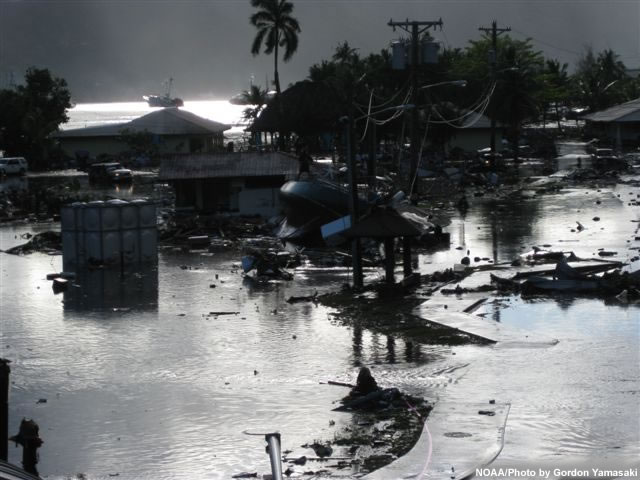
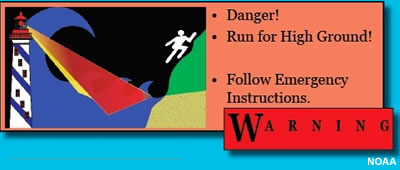
In a Tsunami Warning, a large tsunami bringing significant inundation or flooding is expected. This alert means you and others along the coast should evacuate to higher ground. If you live in a community vulnerable to tsunamis, you may already know about planned evacuation routes or may have seen signs that tell you about these routes. Take time to learn more and plan ahead.

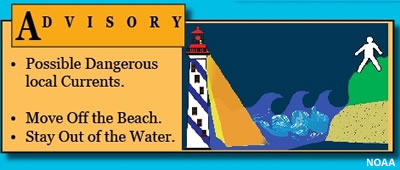
A Tsunami Advisory indicates the possibility of strong and dangerous currents. A Tsunami Advisory means you should stay out of the water and move away from beaches and harbors. While the threat is not as great as with a Warning, the waves can still be dangerous.
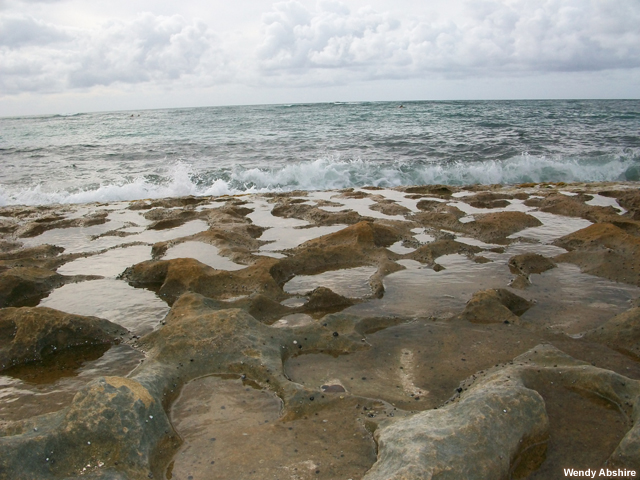
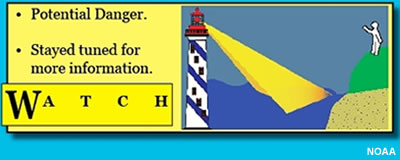
A Tsunami Watch is issued when a tsunami is possible but it won't occur for some hours and the extent of the danger is not yet known. In a Tsunami Watch, you should stay tuned for more information and updates and be prepared to act if necessary.
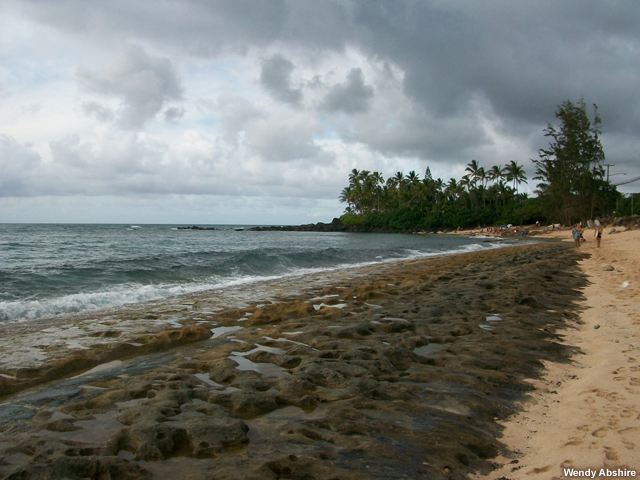
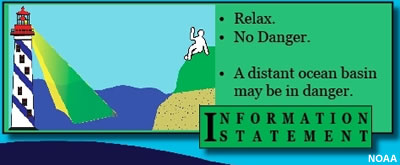
An Information Statement lets you know that an earthquake has occurred but is not expected to send a tsunami to your community. A different location might be in danger, however.
Areas expecting tsunami waves greater than 1 meter waves will be placed in a Warning. Areas expecting waves of 0.3 meter to 1 meter will be placed in an Advisory. These values can be summarized in a table (shown for the U.S. west coast below), with the Warning and Advisory areas shown visually on a map.
| Expected Tsunami Wave Heights | |
| Location | Expected Wave Height (m) |
| Nikolski, AK | 0.34 |
| Sand Point, AK | 0.92 |
| Seward, AK | 0.75 |
| Cordova, AK | 0.30 |
| Sitka, AK | 1.56 |
| Tofino, BC | 1.05 |
| Astoria, OR | 1.38 |
| Astoria, OR | 2.09 |
| Humboldt Bay, CA | 1.85 |
| Half Moon Bay, CA | 2.03 |
| Morro Bay, CA | 2.49 |
| Los Angeles, CA | 0.49 |
| San Diego, CA | 0.40 |
